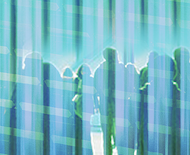Journalism and False Information

The following summary and briefs were conducted by the IFTF Digital Intelligence Lab and made possible by a grant from the New Venture Fund to survey leading journalists and experts to ascertain the impact of false information on the information ecosystem and the production of news.
Following the 2016 election, the field of journalism has been upended by revelations that the spread of false information is not only abundant, but has also potentially undermined democratic outcomes. Empirical studies have shown that digital false information* is impacting information flows surrounding key socio-political issues in the United States and around the globe. Little, however, is known about how the proliferation of false information has affected the field of journalism. This is particularly concerning, considering the fact that journalists are key conduits of information for not only general news, but also the most pressing issues facing society.
This study explores the impact of the rise in false information within the information ecosystem on the production of news. The following report is divided into three briefs. In the first brief, we define the scope of the problem within the field of journalism and outline the challenges journalists are facing due to the rising presence of false information. In the second, we detail the effects of the increasing focus on false information on the profession at large, the production of news, and journalists individually. Finally, in the third, we outline actionable recommendations drawn from journalists themselves to mitigate the negative impact of false information on the production of news. We compliment these recommendations with an experimental intervention that enables participants to more accurately determine the credibility of news stories. This intervention could be applied in newsrooms and on social media platforms.
In The Media
"Study: Journalists need help covering misinformation," by Daniel Funke. Poynter.
Read all 3 reports in the series below.
Written by Kerry Ann Carter Persen, Katie Joseff, Douglas Guilbeault, Joshua A. Becker, and Samuel C. Woolley.
Recommendations
Journalists would benefit from resources across six areas to mitigate the impacts of false information: 1) tools and trainings on mis- and disinformation, 2) guidelines for reporting on false information, 3) advice on operational and legal security, 4) mental health resources, 5) accountability mechanisms, and 6) improved media literacy education.
This report has highlighted the lack of consensus regarding the challenges posed by misinformation, disinformation, and “fake news.” The terms themselves are often ill-defined or conflated. This suggests a need for a set of guidelines on how to contextualize them in the current news environment. Further, there is a significant gap in awareness about the sophistication and power of disinformation campaigns among working journalists. Those reporting on disinformation, as well as experts in the area, tend to understand the potential pitfalls and risks of being targeted by false information; however, others do not even acknowledge that the terrain of information flows and technology has shifted. Awareness campaigns that highlight the ways in which computation propaganda— the use of automation and algorithms on social media to manipulate public opinion—and sophisticated manipulative actors can reach journalists would be helpful in closing that gap. Trainings on social media, tools available to identify false information, and access to individuals with expertise in false information and data science would be complementary to these efforts.
Perhaps the most contentious debate in this space is when and how to report on false information. Understanding when it is appropriate to cover false information and how to do so to avoid giving it “oxygen” or inadvertently lend it credibility is still not well understood across the field of journalism. Guidelines for coverage, like those that Data & Society have developed, should be more widely spread and discussed within the profession through journalism classes, professional associations, and within newsrooms.
In the current news environment, journalists feel discouraged and discredited. More awareness of the anxiety prevalent across the field and strategies to approach accusations of “fake news” or spreading misinformation is greatly needed. Many journalists explicitly said they would benefit from better mental health resources and a broader, more visible discussion about the implications of harassment and declining credibility in the field. Further research is needed to better understand how anxiety and harassment is influencing who is entering the field and who is potentially leaving the field. Some of those interviewed and surveyed hypothesized that increased burnout or the deterrent of the current news environment may have effects on the future of the news force, particularly for minorities and women. This could have long-term effects on the production of news. There is an urgent need in the journalism community for more trainings and information on operational and legal security, on approaches to establishing and re-establishing accountability in the face of the current cascade of false information, and increased media and information literacy in the U.S. education system.
The original intervention we propose—informed by thorough experiment-based, empirical, research—suggests that efforts to establish networks to identify or label false information must be designed with care. Our results indicate that interventions that label information as true or false may actually result in amplifying error in unsophisticated (less-informed) networks. Instead, and crucially, labeling a story’s credibility on a continuous scale improved the accuracy of networks and outperformed improvements in accuracy from networks labeling stories dichotomously as true or false. These findings have implications for many of the current interventions being tested in the field. We believe that further research should be conducted in order to better understand the conditions under which networks or interventions, including the one we present here, can be applied successfully to the field of journalism, or more broadly on social media.
Future research should also expand on the current tools to identify disinformation campaigns and false information, as well as the different contexts of these issues globally. Easily accessible and usable tools that could help journalists identify fake video or images would be beneficial to the field. Unfortunately, the tools that can help identify things like deep fakes (or highly convincing counterfeit video) are often outpaced by the development of technology. Aggregations of resources for journalists like technological tools—as well as more traditional websites, databases, and experts—would be helpful. Indeed, our survey and interviews suggest that there is a lack of mutual awareness of the potential tools and resources currently available for checking sources and tracking disinformation efforts. In closing, we must note that this report is limited in scope to the current news environment in the United States and, somewhat, the United Kingdom. Delving into the implications for false information globally, particularly in the developing world, is a critical next step for future research.
For more information
If you are interested in learning more about how to work with IFTF's Digital Intelligence Lab, please contact






